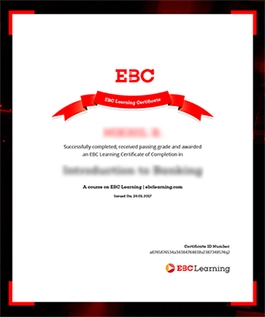Initiation into M&A Practice
An M&A event is an evolutionary milestone in a company’s lifetime. It impacts its human resources, governance, customer relationships, intellectual property, control and management and at times the company’s own existence.
A complete M&A transaction is a product of planning, strategy and foresight of the several players involved. Every step in a deal process is essential and if well calibrated has the potential to lead to a win-win situation for the parties concerned.
The course begins by understanding the M&A process and one’s role as a lawyer in that process. Then the course moves on to the whole structure of M&A transactions and how to go about them? And what are the applicable laws? Mr Mathur also discusses in detail about drafting M&A agreements. The acquisition agreements are broken into their components and examined in the context of how they would function in a deal. By the end of this course, one will be well versed with the entire deal process from start to finish, i.e. from pre-deal stage to post-deal integration and disputes. As a part of the course, Mr Tarun Mathur has also included several supplements of draft agreements and clauses that will be useful.
Why Take This Course?
- Comprehensive Understanding: Gain a thorough grasp of the M&A process, from initial planning to post-deal integration, ensuring you understand every critical step and decision.
- Legal Expertise: Learn the legal frameworks and requirements essential for M&A transactions, making you proficient in navigating complex legal landscapes.
- Practical Insights: Benefit from expert guidance on drafting and negotiating M&A agreements, with detailed analysis and practical examples from Mr. Tarun Mathur.
- Holistic Approach: Understand the multifaceted impact of M&A on various aspects of a company, including human resources, governance, and intellectual property.
- Supplementary Resources: Access valuable supplements, including draft agreements and clauses, to enhance your practical skills and application.
- Career Advancement: Equip yourself with the knowledge and skills to excel as an M&A lawyer, opening up advanced career opportunities in corporate law.
Who Should Take This Course?
- Law Students and Recent Graduates: Ideal for those aspiring to specialise in corporate law and gain a deep understanding of M&A processes.
- Practising Lawyers: Enhance your expertise in M&A transactions, from drafting agreements to navigating complex legal requirements.
- In-House Counsels: Equip yourself with comprehensive knowledge to manage and advise on M&A activities within your organisation.
- Corporate Executives and Managers: Understand the strategic, legal, and operational aspects of M&A to better lead your company's growth initiatives.
- Chartered Accountants and Company Secretaries: Gain insights into the financial and compliance aspects of M&A, crucial for advising clients and ensuring regulatory adherence.
- Business Consultants and Advisors: Enhance your ability to guide clients through successful M&A transactions, from initial planning to post-deal integration.
- Entrepreneurs and Business Owners: Learn to navigate M&A opportunities, ensuring you can make informed decisions that align with your business goals.
Course Structure
Engaging and Structured Videos: Learn at your own pace with our expertly crafted video lectures delivered by leading industry professionals. Whether you are exploring a new area of law or reinforcing your existing expertise, the series of short videos (around 2-3 minutes each) empower you to learn at your own pace, revisiting concepts as needed. Each video segment is thoughtfully crafted to explain the practical applications and processes related to the specific Definition, Concept, Explanation, Section, or Article being covered.
Practical Assignments and Solutions: Solidify your knowledge with practical exercises that put theory into action. Wherever required, practical assignments are explained in detail through ‘Solutions Videos’ or ‘Solutions Guide’, wherein our experts walk you through every step for solving practical legal problems either through videos or a documentary guide.
Q&A for Knowledge Mastery: Test your understanding and gain clarity through Multiple Choice Questions (MCQs) at the end of Chapters. These MCQs test your comprehension and application of mind, ensuring you have the right understanding of the course material.

A merger is hard to pull off under any circumstances. It’s harder when everybody is against you.
Carly Fiorina- 1. 📕 Introduction
- 1.1 ▸ Welcome and scope
- 1.2 ▸ Understanding the team and a lawyer’s role
- 1.3 ▸ Becoming an M&A lawyer
- 1.4 Supplements
- 2. 📕 Understanding Corporate Transactions
- 2.1 ▸ Mergers
- 2.2 ▸ Amalgamations or scheme of arrangement
- 2.3 ▸ Acquisition
- 2.4 ▸ Stock acquisition
- 2.5 ▸ Asset sale or slump sale
- 2.6 ▸ Joint ventures
- ☆ Feedback
- 3. 📕 Undertaking M&A Transactions
- 3.1 ▸ Identifying the motives and triggers for an M&A transaction
- 3.2 ▸ Identifying the other party and preliminary evaluation
- 3.3 ▸ Kick-off meeting
- 3.4 ▸ Due diligence
- 3.5 ▸ Negotiations
- 3.6 ▸ Signing the agreement and other formalities
- 3.7 ▸ Structuring the transaction
- 3.8 ▸ Structuring considerations of the parties
- 3.9 ▸ Stock versus asset-purchase considerations
- 4. 📕 Leveraged Buyouts and Management Buyouts
- 4.1 ▸ Leveraged buyouts
- 4.2 ▸ Management buyouts
- 4.3 ▸ Leveraged and management buyout process
- 5. 📕 M&A Transaction: Legal Requirements and Issues
- 5.1 ▸ Applicable laws
- 5.2 ▸ M&A and Companies Act: Provisions on share transferability
- 5.3 ▸ Preferential allotment
- 5.4 ▸ Why do target companies issue new shares in M&A?
- 5.5 ▸ Issuance of preference shares: Points to remember
- 5.6 ▸ SEBI Takeover Code
- 5.7 ▸ SEBI Listing Regulations, 2015
- 5.8 ▸ M&A and the Competition Act
- 5.9 ▸ Foreign Exchange Management Act, 1999 (FEMA)
- 5.10 ▸ Income Tax Act and indirect taxation
- 5.11 ▸ Stamp duty
- 6. 📕 Pre-deal Agreements and Documents
- 6.1 ▸ Introducing pre-deal agreements
- 7. 📕 Pre-deal Agreements - Confidentiality Agreements
- 7.1 ▸ Confidentiality agreement
- 7.2 ▸ Enforcement of confidentiality agreement
- 8. 📕 Pre-deal Agreements - Standstill, Exclusivity and No-shop Provisions
- 8.1 ▸ Standstill agreements
- 8.2 ▸ Exclusivity agreements
- 8.3 ▸ No-Shop provisions
- 8.4 ▸ Fiduciary Out
- 8.5 ▸ Inter-play between exclusivity, no-shop and fiduciary-outs agreements
- 9. 📕 Pre-deal Agreements - Letters of Intent, MOUs and Term Sheets
- 9.1 ▸ Letters of intent or memorandum of understanding or term sheets
- 10. 📕 Acquisition Agreement
- 10.1 ▸ Acquisition agreements: Structure and recitals
- 11. 📕 Acquisition Agreement - Purchase Price Provisions
- 11.1 ▸ Form of consideration
- 11.2 ▸ Collars
- 11.3 ▸ Fixed and contingent consideration
- 11.4 ▸ Earnouts
- 11.5 ▸ Financing risk & commitment letters
- 12. 📕 Acquisition Agreement - Representations & Warranties
- 12.1 ▸ Form of representations and warranties
- 12.2 ▸ Functions of the representations
- 12.3 ▸ Scope of seller’s or target’s representations
- 12.4 ▸ The buyer’s representations and warranties
- 12.5 ▸ Qualifications to the representations
- 12.6 ▸ Disclosure schedules
- 13. 📕 Acquisition Agreement - Covenants
- 13.1 ▸ Introduction
- 13.2 ▸ Operating covenants and “Get the Deal Done” covenant
- 13.3 ▸ Affirmative covenants
- 13.4 ▸ Other post-closing covenants
- 14. 📕 Acquisition Agreement - Closing Conditions
- 14.1 ▸ Closing conditions
- 15. 📕 Acquisition agreement - Termination
- 15.1 ▸ Termination rights
- 15.2 ▸ Breakup fees and reverse termination fees
- 15.3 ▸ Material adverse effect
- 15.4 ▸ Material adverse effects carve-outs
- 16. 📕 Acquisition Agreement - Remedies
- 16.1 ▸ Remedies - Termination
- 16.2 ▸ Remedies - Basic indemnity
- 16.3 ▸ Remedies - Special indemnity
- 16.4 ▸ Escrow agreement
- 17. 📕 Ancillary Agreements
- 17.1 ▸ Ancillary agreements
- 17.2 ▸ Side-letters
- 17.3 ▸ Assignment of IP
- 17.4 ▸ Employment agreements
- 18. 📕 Negotiating M&A deals
- 18.1 ▸ Introducing negotiations
- 18.2 ▸ Prepare, and prepare some more
- 18.3 ▸ Understanding leverage
- 18.4 ▸ Control the agenda/writing
- 18.5 ▸ Have a written “heat map”
- 18.6 ▸ Think through your strategy
- 18.7 ▸ Ethics and listening skills
- 19. Conclusion
- 19.1 ▸ Next steps
- ☆ Feedback
Instructors

Tarun Mathur
Counsel, Huntsman Corporation & Director (Legal Department), PwC
Tarun Mathur has 10+ years of law firm, regulatory and consulting experience. He has worked with SEBI (Corporate Restructuring and Corporate Issues and Listing), in Cyril Amarchand Mangaldas and in Trilegal.

When you see a merger between two giants in a declining industry, it can look like the financial version of a couple having a baby to save a marriage.
Adam DavidsonCertificate
Complete this course and exercises to earn a certificate. Share it with your friends, colleagues, and employers.*
*You must Subscribe to get a certificate.

Limit Reached or Trial Expired
You have reached the limit of 2 audit enrollments or your trial period has expired.

